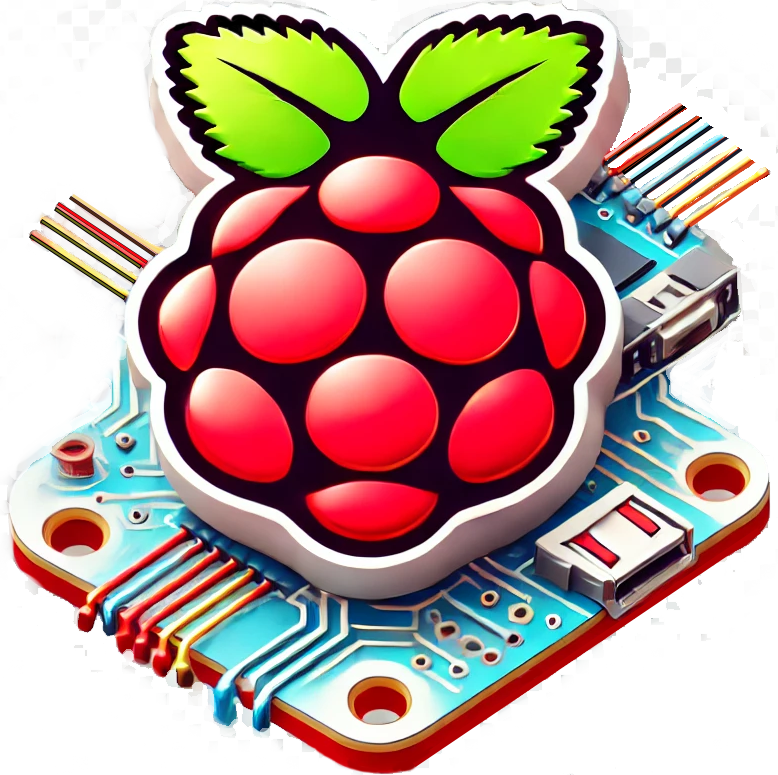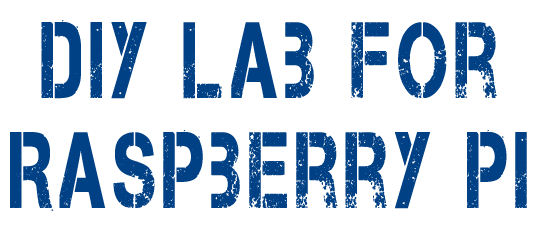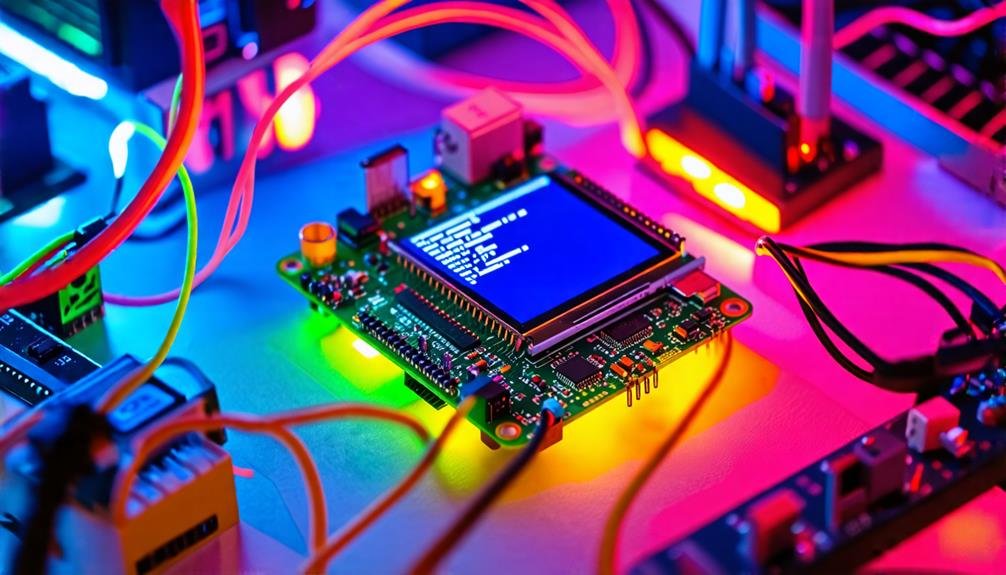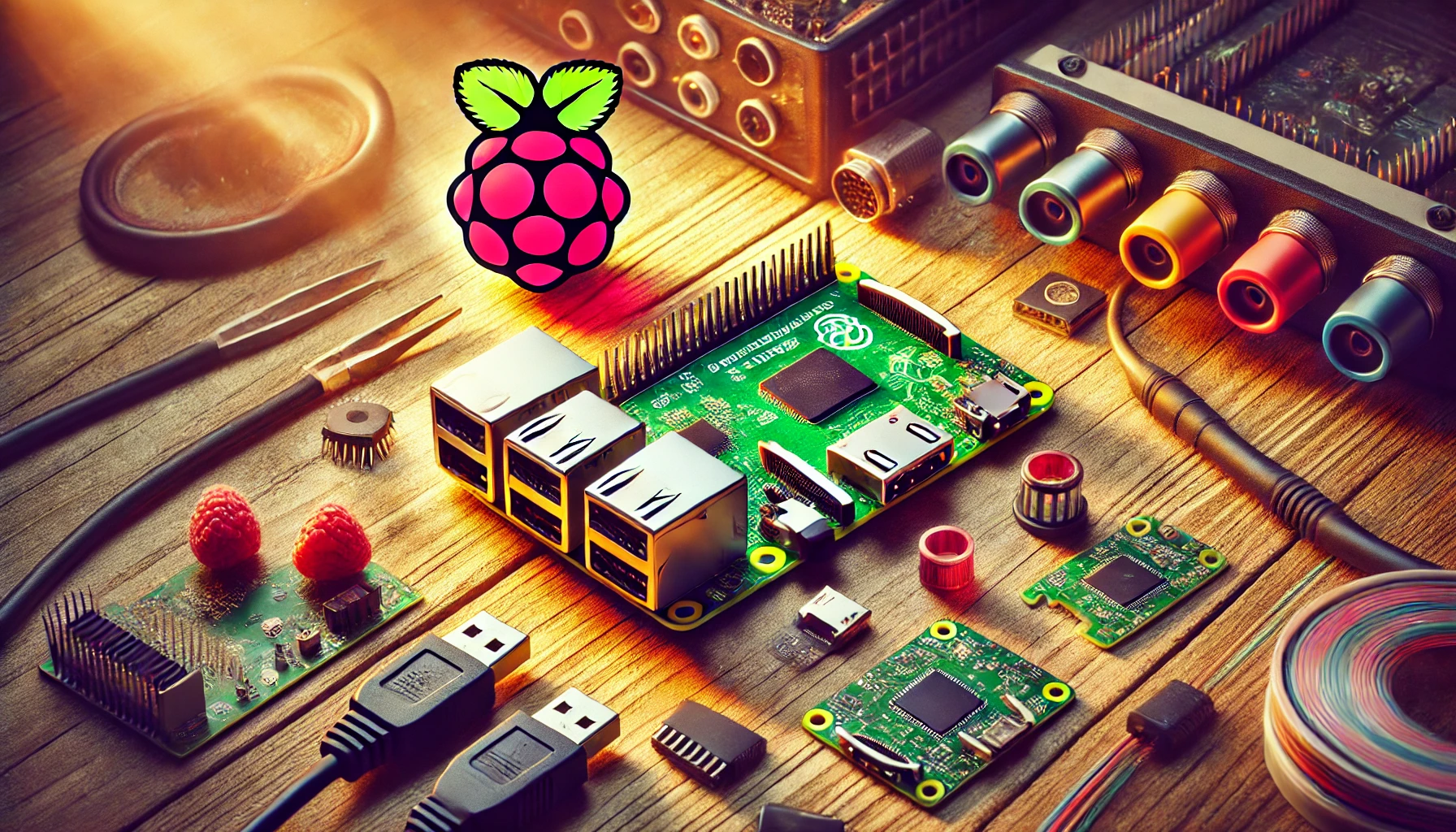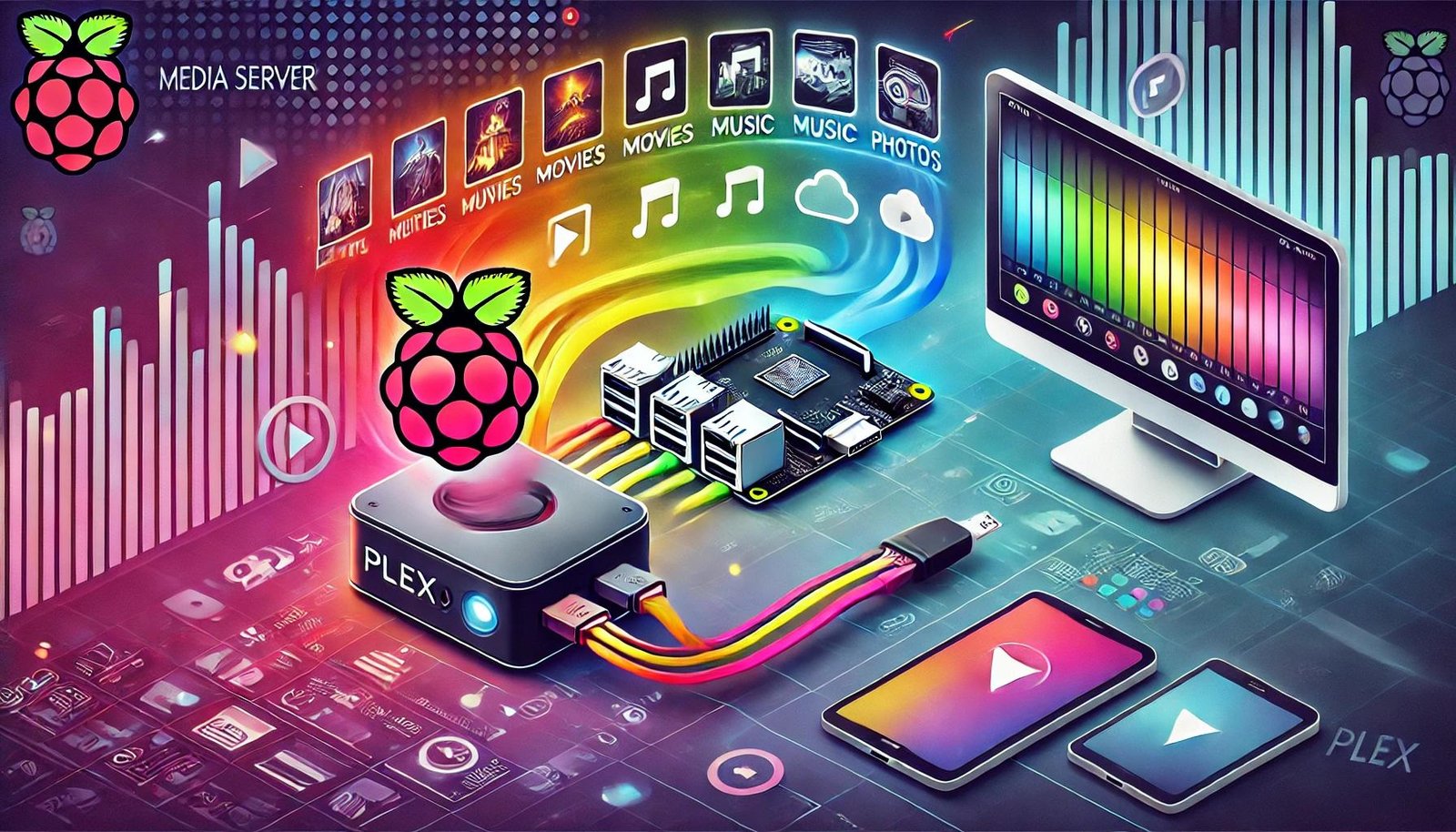Raspberry Pi is a low-cost, single-board computer perfect for education and innovative projects. Priced typically under $100, it is accessible to many users.
This platform encourages hands-on learning in programming and electronics, which helps improve problem-solving skills. Its GPIO pins allow users to connect with various electronic components, promoting creative collaboration.
Users also gain from a large online community that offers resources and support for applications like robotics, IoT, and media centers.
With ongoing advancements and a growing ecosystem, exploring Raspberry Pi can uncover more opportunities for both personal and professional growth.
Key Takeaways
- Affordable Raspberry Pi: Priced under $100, the Raspberry Pi is a budget-friendly choice for education and hobbyist projects.
- Hands-On Programming Experience: Using Raspberry Pi helps learners gain practical skills in programming and electronics, boosting problem-solving abilities.
- Versatile Project Applications: From IoT devices to robotics, game development, and media centers, Raspberry Pi supports a wide range of interests.
- Strong Community Resources: A large online community offers tutorials, project ideas, and collaboration, encouraging creativity and learning.
Benefits of Raspberry Pi
Raspberry Pi is a low-cost and flexible platform perfect for learning. Created by the Raspberry Pi Foundation, this single-board computer is a fantastic tool for education, especially for teaching Python programming and DIY electronics. Its low price helps schools use technology without spending too much money, making it available to more students.
The flexibility of Raspberry Pi allows it to connect with different sensors and components. This feature encourages hands-on projects that boost problem-solving and critical thinking skills. Teachers can find support from the community through a wealth of online resources, tutorials, and forums, which helps them use Raspberry Pi effectively in their lessons.
Additionally, this platform encourages teamwork among students. They can collaborate on projects that mix creativity with technical skills. By working with Raspberry Pi, students build a strong understanding of computing concepts and gain practical experience useful in real-life situations.
Introduction to Raspberry Pi: A Low-cost Single-Board Computer
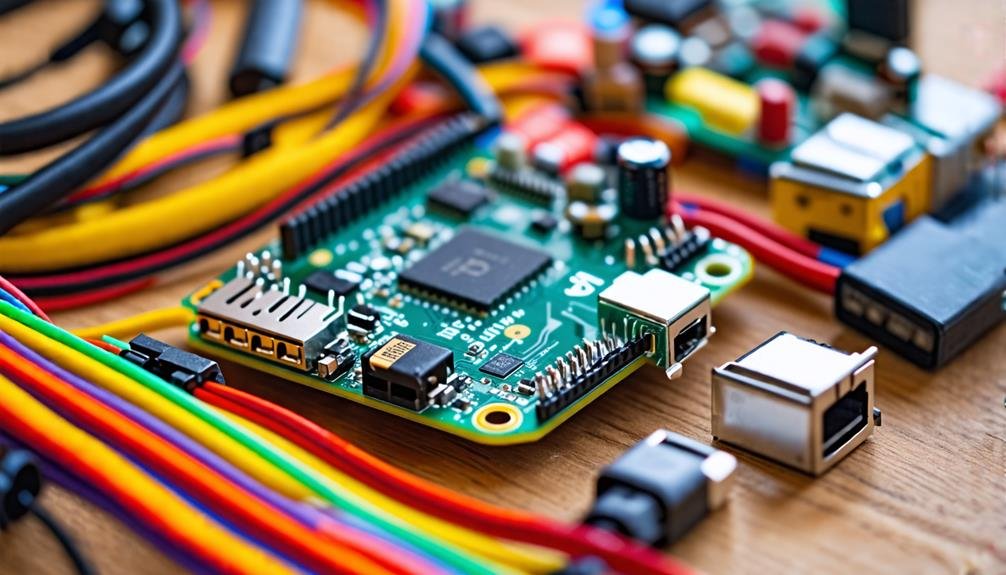
Developed by the Raspberry Pi Foundation, the Raspberry Pi is a low-cost single-board computer. This device is perfect for learning and creating in technology. Its small size makes it easy to use in various projects, which is great for prototyping. The Raspberry Pi uses very little power, allowing you to use it for a long time without high energy costs.
With GPIO pins, users can connect different electronic parts, which helps them learn coding and how hardware works together. The device runs on Linux, making it flexible and able to use many open-source applications that fit users’ needs. You can also attach different expansion boards to the Raspberry Pi, which can increase its capabilities and help you customize your projects.
This platform is excellent for building coding skills, providing a hands-on space for learners to practice programming languages. The large Raspberry Pi community offers many resources, tutorials, and project ideas, promoting teamwork and creativity.
Benefits in Education: How Raspberry Pi Promotes Hands-on Learning
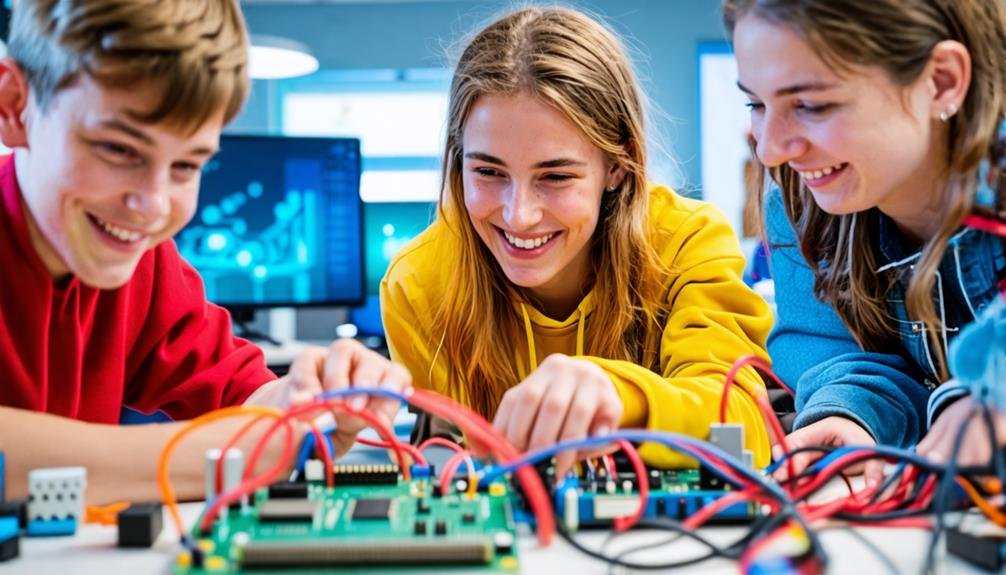
Using Raspberry Pi in schools encourages hands-on learning. This exciting platform helps teachers effectively teach programming skills and computer science basics. By working on fun projects, students improve their problem-solving skills, which are very important in today’s tech-driven world.
Raspberry Pi also promotes teamwork among students. They can collaborate on projects that inspire creativity and new ideas. The large community around Raspberry Pi offers many resources, like tutorials and forums. Teachers can use these tools to make their lessons more engaging and effective. This easy access to information allows students to explore technology beyond what they learn in the classroom.
Additionally, students can use Raspberry Pi projects to apply what they’ve learned in real-life situations. This helps them understand and remember concepts better. As students tackle challenges, they grow more resilient and adaptable, which are key skills for their future.
Through hands-on learning with Raspberry Pi, education becomes exciting and prepares students for both academic success and lifelong problem-solving in a complex world.
Affordability and Accessibility
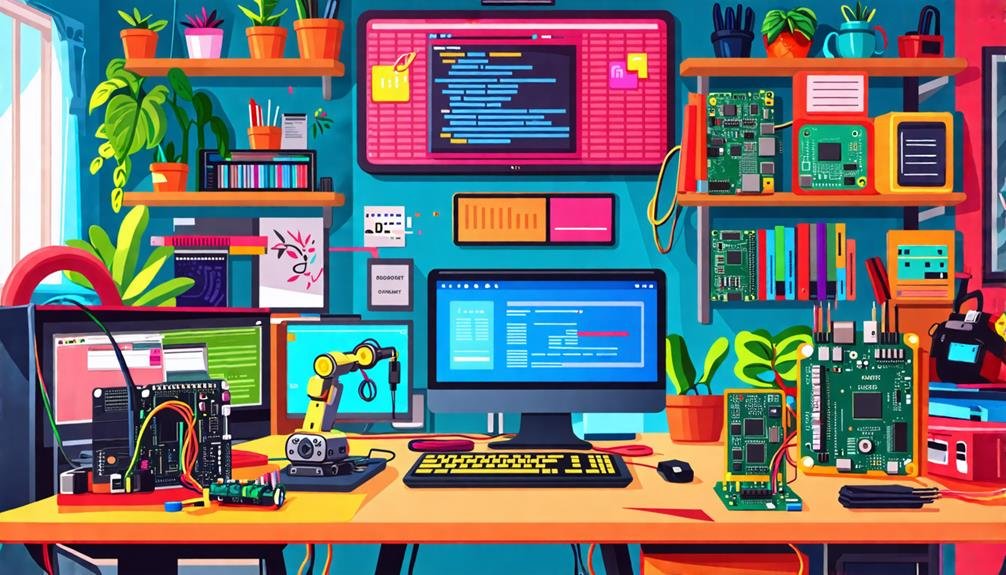
The affordability of Raspberry Pi makes it a great tool for both educators and students. With prices usually under $100, the Raspberry Pi helps remove barriers to learning. This encourages more people to try hands-on technology education.
The platform runs on Raspbian OS, which is easy to use for many applications. Teachers can use Raspberry Pi in makerspaces, where students can work on IoT projects, home automation, and robotics. It can also be turned into media centers or retro gaming consoles, attracting a variety of interests.
Raspberry Pi’s networking capabilities support teamwork, allowing students to collaborate on projects and improve their problem-solving skills. Its low cost allows schools to include Raspberry Pi in their programs without worrying about high expenses.
Improving Computer Literacy

Raspberry Pi is a fantastic tool for boosting computer literacy. It gives users hands-on experience with technology in a simple way. This low-cost device helps people explore computing concepts and dive into programming, hardware, and software development. When learners use the Raspberry Pi, they develop important skills that are vital in our digital world.
Through project-based learning, users can try out coding languages like Python and Scratch. This helps them understand programming logic and problem-solving better. The flexibility of the platform allows users to work on various projects, from robotics to media centers, applying their skills in real-life situations.
The large online community that surrounds Raspberry Pi adds to the learning experience. Users can find tutorials, join forums, and discover project ideas that promote teamwork and assistance. By breaking down complicated technologies, Raspberry Pi helps users take charge of their digital lives, building their confidence and skills in computing.
Boosting Inclusivity in Education
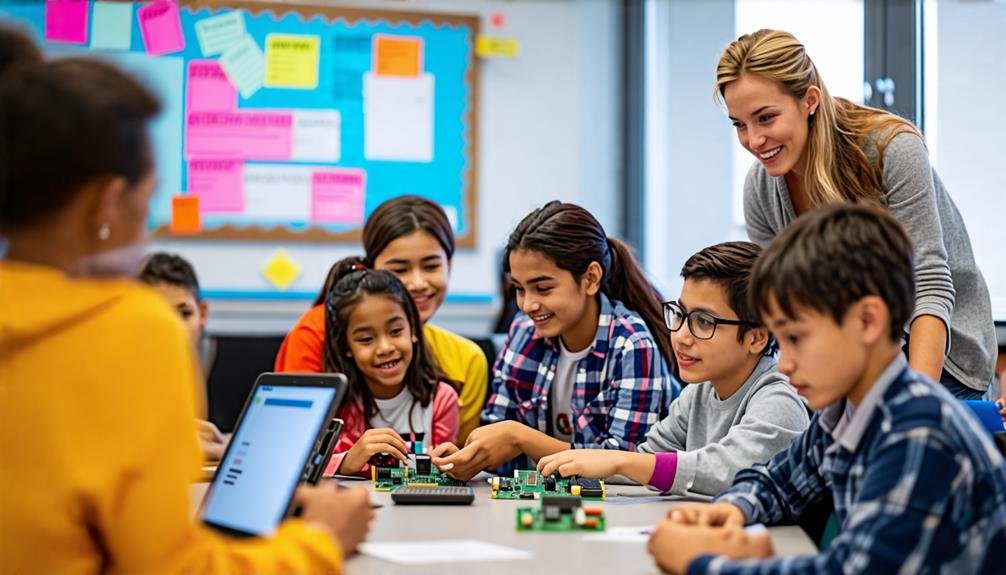
Inclusivity in education is crucial for creating a space where all students can thrive, regardless of their backgrounds or abilities. The Raspberry Pi is a powerful tool that promotes this inclusivity. Its affordability ensures that schools in various socioeconomic settings can access technology, helping to close gaps that often prevent educational equity.
The Raspberry Pi allows for differentiated instruction customized to fit individual learning styles. Its versatility enables teachers to create engaging and interactive content that supports students with different needs, including those with learning disabilities. This adaptability boosts participation and motivation among all learners, fostering a sense of belonging.
Additionally, the vast online community around Raspberry Pi offers valuable resources for educators. Teachers can find lesson plans, project ideas, and troubleshooting support, equipping them to use innovative teaching methods effectively. This collaboration among educators encourages the sharing of best practices in inclusive teaching.
Projects and Applications
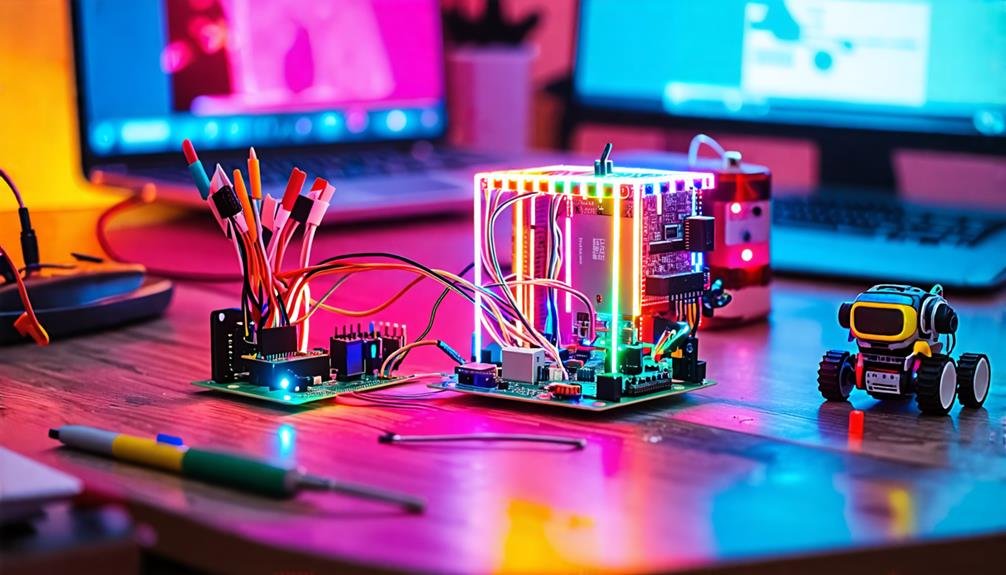
Using Raspberry Pi in educational projects can significantly improve student learning experiences. This small computer helps students gain hands-on skills in coding, electronics, and problem-solving. With its versatility, Raspberry Pi can be used for many projects, from building a simple weather station to creating a complex home automation system. These activities encourage students to think critically and innovate, allowing them to dive into concepts in computing and engineering.
Raspberry Pi fits well into various subjects, enhancing STEM education through practical applications. For example, students can learn about data collection by making sensors that monitor environmental conditions. The device also allows for multimedia projects, where students can create interactive presentations or design basic video games, sharpening their technical skills.
Additionally, the large online community provides plenty of resources and tutorials, enabling students to start their own independent projects. Teamwork is encouraged, as students can collaborate to solve problems, share ideas, and develop solutions together.
This teamwork not only boosts their technical skills but also builds important soft skills like communication and teamwork, preparing them for future academic and career opportunities.
Programming and coding

Fostering programming skills and coding skills through Raspberry Pi helps students engage with technology hands-on. This hands-on approach boosts their computational thinking and problem-solving abilities.
The Raspberry Pi platform is an easy entry point for various programming languages, such as Python, Scratch, and Java. Students can choose a language based on their skill levels and interests.
The rich ecosystem of Raspberry Pi supports practical coding projects. These projects reinforce theoretical concepts with real-world applications. This experiential learning helps students understand computer science fundamentals better, making complex topics easier to grasp. Additionally, the user-friendly interface makes learning smoother, encouraging students to experiment and be creative.
Collaboration within the Raspberry Pi community enhances the educational experience. Students can share projects, troubleshoot problems, and find a lot of online resources, like tutorials and forums. This collaborative environment supports peer learning, which is vital for mastering coding skills.
Automation and Control Systems
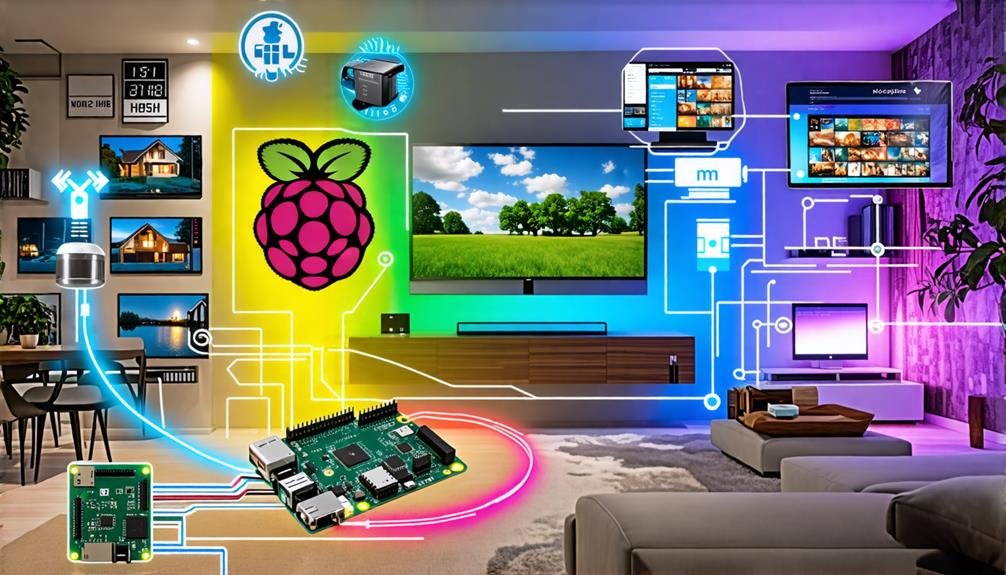
Building on the programming skills developed through Raspberry Pi, students can explore automation systems and control systems. They apply their coding knowledge to real-world scenarios. This exploration helps them understand how automated systems enhance efficiency and precision across various sectors.
Raspberry Pi is a practical tool for creating automation projects. It enables students to design and implement solutions that control devices and manage processes. By integrating sensors and actuators, learners can develop systems that respond to changes in their environment. This hands-on experience builds critical thinking and engineering skills as students troubleshoot and improve their designs.
Furthermore, working on automation projects encourages collaboration and project management skills. Students often work in teams to achieve shared goals. By engaging in these projects, they learn about the complexities of automation, including programming logic, data processing, and system integration.
In the end, the Raspberry Pi platform empowers students to innovate in automation systems and control systems. This prepares them for future challenges in technology-driven industries. Their experience not only strengthens their technical knowledge but also motivates them to pursue careers in engineering, robotics, and related fields.
IoT devices and Protocols

The integration of Raspberry Pi in Internet of Things (IoT) projects helps students create smart devices. These devices can communicate and work well within interconnected systems. This skill is vital in today’s tech-driven world, where IoT devices are everywhere.
Raspberry Pi supports different communication protocols like MQTT, HTTP, and CoAP. These protocols enable smooth data exchange between devices. Students can use them to build applications that monitor environmental conditions, manage home automation systems, or control remote sensors. The flexibility of Raspberry Pi allows for adding many sensors and actuators, making IoT projects more functional.
Additionally, Raspberry Pi works well with cloud services. This compatibility helps students create scalable applications. They gain real-world experience by deploying IoT solutions. Students can analyze data and apply machine learning algorithms to gain insights, which enhances their understanding of data-driven decisions.
Moreover, Raspberry Pi encourages teamwork. Students collaborate to design and troubleshoot their IoT systems. This hands-on learning develops important skills in programming, electronics, and system integration, preparing them for future careers in technology and engineering.
Game Development
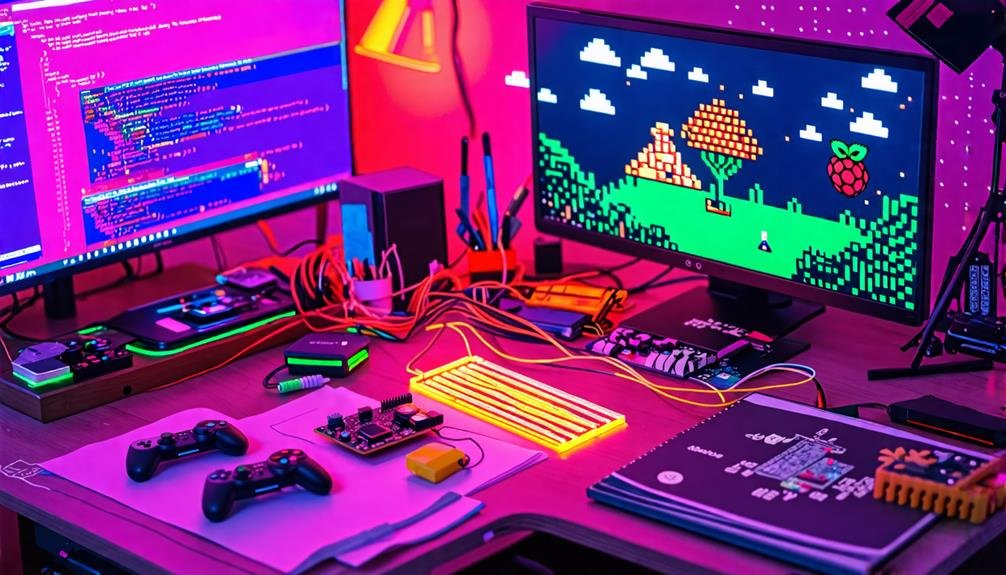
Using Raspberry Pi in game development projects helps students learn coding, design, and problem-solving skills. The small size of Raspberry Pi makes it easy to fit into different game development environments, making it a great choice for schools.
Students can try out programming languages like Python and C++, improving their skills while building fun games. Libraries such as Pygame make it easier to learn, allowing for quick game creation.
Additionally, Raspberry Pi encourages creativity by letting students design their own game features and graphics. This hands-on method helps them think critically as they work through challenges and improve their games.
The device has GPIO pins that allow for exciting hardware projects, such as custom controllers or sensors. This gives students a better understanding of how software and hardware work together.
There is also a large online community that provides tutorials, forums, and project ideas. As students work together on game development, they build teamwork and communication skills that are important today.
Therefore, Raspberry Pi is a valuable tool for future game developers, blending technical learning with creative fun.
YouTube Content Creation

In addition to game development, Raspberry Pi is a great option for YouTube content creation. It allows students to produce, edit, and share videos while developing their technical skills. This small, powerful computer can run various video editing software like OpenShot and Kdenlive, enabling users to work with their footage effectively.
Students can use Raspberry Pi to record gameplay, create tutorials, or film vlogs. This promotes creativity and helps them improve their storytelling skills. Its low cost makes it easy for new content creators to try different formats without spending a lot of money.
Plus, the community-driven resources available for Raspberry Pi offer helpful tutorials and project ideas. These resources guide students through their content creation process. Using Raspberry Pi gives hands-on experience that builds important skills in digital literacy and media production.
Additionally, Raspberry Pi works well with many peripherals, allowing for the use of cameras and microphones to create high-quality content. This helps students learn about the technical side of video production, from filming to editing.
Future Prospects and Perspectives
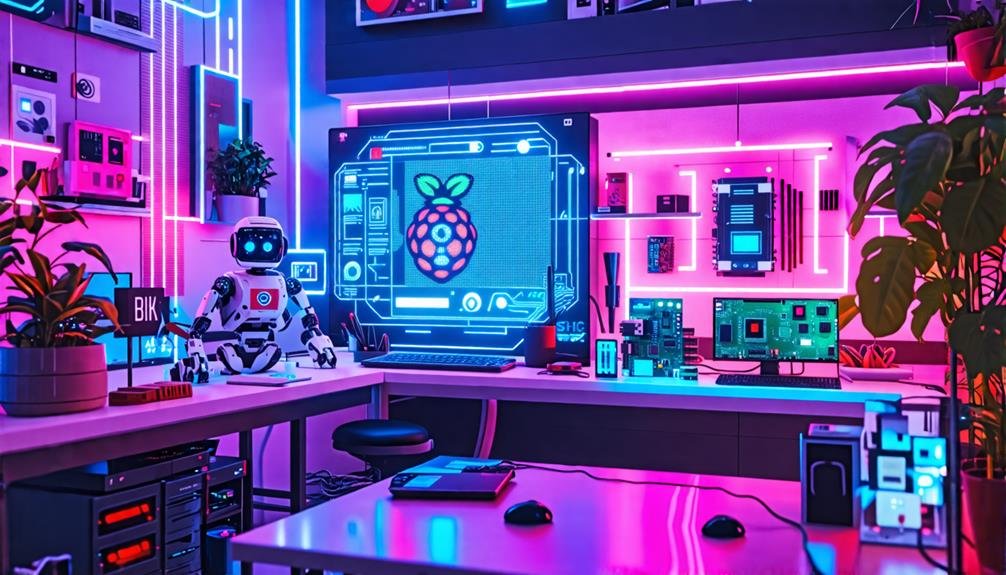
The future of educational technology is bright, especially with tools like Raspberry Pi. This small computer has the potential to enhance learning and inspire innovation. As education changes, Raspberry Pi will help students connect with technology and gain important skills.
Increased Adoption: More schools will start using Raspberry Pi as teachers recognize its benefits.
Tailored Resources: New educational software will create personalized learning experiences for students, helping them engage more deeply.
Community Expansion: The Raspberry Pi community will keep growing, providing more chances for teachers and students to collaborate and support each other.
These changes will make learning more exciting and empower students to solve problems and innovate.
As schools welcome these updates, Raspberry Pi can help shape a generation of tech-savvy individuals ready to face future challenges.
The ongoing development of Raspberry Pi will definitely impact teaching strategies, making it a key player in achieving high-quality education.
Innovation and Adaptation in the Raspberry Pi Space
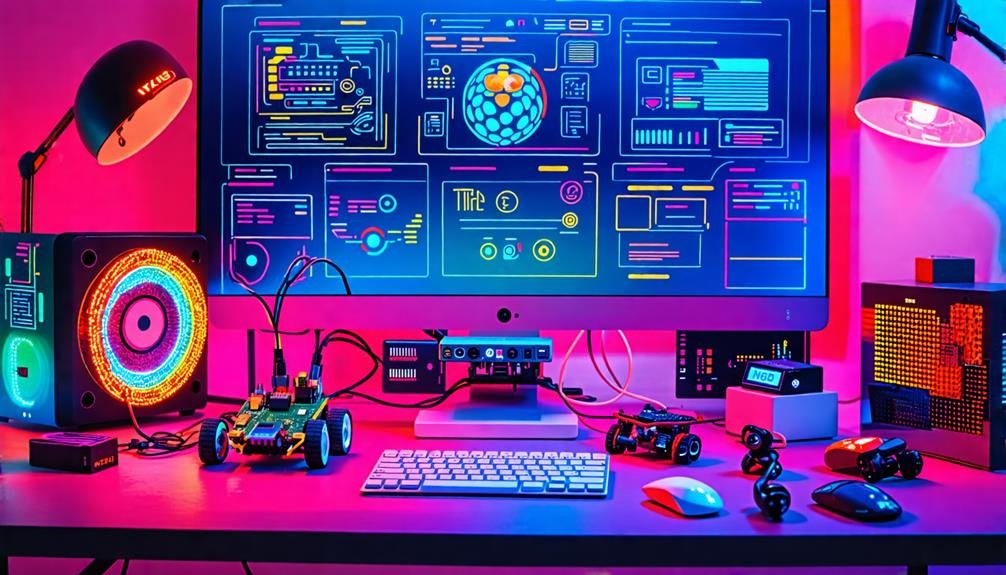
Innovation within the Raspberry Pi ecosystem is creating new opportunities for education and technology.
The platform has grown in usefulness through software updates and community projects. This helps users build different solutions, like robotics and data analysis tools. Such flexibility allows educators to customize learning experiences for their specific goals.
The Raspberry Pi Foundation promotes teamwork among developers, educators, and students. Events like hackathons and coding clubs encourage sharing knowledge and spark creativity, which improves the learning journey. Adding artificial intelligence and machine learning to Raspberry Pi projects helps prepare students for future tech fields.
Moreover, the availability of Raspberry Pi resources ensures that educators can use the platform for creative teaching methods. Open-source software and thorough documentation support ongoing improvement and experimentation.
As educators and students work with these tools, they develop critical thinking skills and technical knowledge, which are crucial for navigating today’s complex technology.
In this way, the innovative nature of Raspberry Pi not only empowers its users but also shapes the future of education and technology.
Future Developments and Hardware Advancements
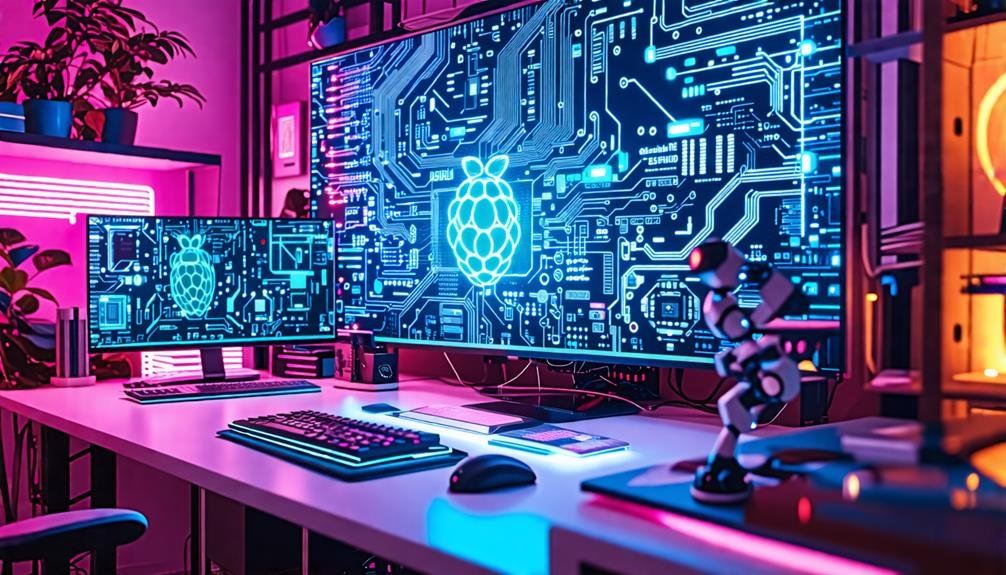
Future developments in Raspberry Pi hardware are set to improve performance, broaden connectivity, and support educational programs. As the need for more powerful and flexible computing solutions increases, the Raspberry Pi Foundation will likely introduce upgrades that meet the needs of both education and industry.
Key areas of focus include:
- Increased processing power: New models may have faster CPUs and better GPUs. This will enable users to run more complex applications quickly.
- Enhanced connectivity: Updates in wireless technology, like advanced Wi-Fi and Bluetooth, will help connect better with IoT devices and cloud services.
- Expanded peripheral support: Future versions may work with more sensors and devices. This will make the platform even more useful for STEM education and prototyping.
These improvements will strengthen Raspberry Pi’s role in classrooms and ensure it remains important in new tech fields. The ongoing updates to the platform will keep it a key tool for innovation, helping users explore what they can do with affordable computing solutions.
Conclusion
The integration of Raspberry Pi in education significantly improves learning experiences. It promotes hands-on engagement, which helps students think critically.
The affordability of Raspberry Pi makes it accessible to many schools and institutions. Additionally, the strong online community offers valuable resources for learners and teachers alike.
By boosting computer literacy, Raspberry Pi encourages students to work on innovative projects. This technology transforms traditional teaching methods.
As hardware and software continue to advance, the applications of Raspberry Pi will grow, making it an essential tool in the future of education and technology.
